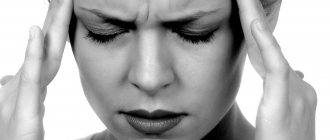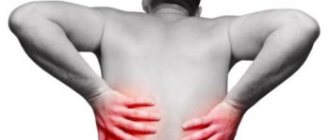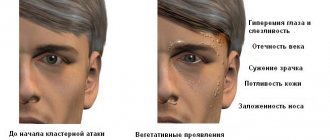Chronic pelvic pain can occur against the background of gynecological, urological and proctological diseases and injuries of the pelvic area. But it happens that after long, repeated attempts at drug or non-drug treatment, the expected result is not achieved. The pain does not go away completely. In this case, the source of pain is often the muscles and ligaments of the pelvic area. Disturbances in the biomechanics of the pelvis can also cause pain. Low effectiveness of therapeutic measures is one of the signs for diagnosing chronic pelvic pain syndrome (CPPS). Other signs:
- duration of at least six months,
- behavioral disorders,
- decreased physical activity,
- the inability to explain pain or its severity by tissue damage.
Causes and symptoms of chronic pelvic pain
There are three main causes of chronic pelvic pain syndrome, usually we find a combination of two or all three causes at the same time.
The main causes of chronic pelvic pain:
1.
Inflammation of the ligaments and tendons of the pelvic floor.
In essence, this is a rheumatic reaction to an inflammatory process occurring in the immediate vicinity involving an infection (prostatitis, cystitis, inflammation of the intestines).
The muscles and ligaments of the pelvis are very powerful, significant tension develops in them, hence the severe pain in the groin, abdomen, and anus.
2.
Infringement of the pelvic floor nerves.
The pelvic floor ligaments are packed compactly next to the nerves that exit the sacrum and abdomen into the legs and scrotum.
In case of inflammation, the ligaments swell, which means they increase in thickness and take up additional volume, putting pressure on the nearby nerves. Hence the pain along the nerves, radiating to the genitals, scrotum, legs, lower back, tailbone. 3. Increased perception of pain.
This is due to the exhaustion of the nervous system due to prolonged pain.
The brain spends too many resources on blocking all the incoming pain impulses, becomes exhausted and loses its ability to block pain. Hence the weak effect of painkillers
and
night pain.
You can take as many painkillers as you like, but you can radically solve the problem by addressing the listed causes
. This is how treatment will be structured in our clinic.
Negative health effects of chronic pelvic pain syndrome
If pain in the pelvic area is associated with muscle-ligamentous tension, a special approach is required.
In this case, using conventional painkillers is not enough. Even if they relieve pain for a short time, they will not eliminate their cause - muscle spasms and asymmetric ligament tension. Firstly, musculo-ligamentous disorders play a negative role, worsening the functional health of the pelvic organs. First of all, they impede blood circulation. This leads to stagnation, against the background of which the risk of developing various gynecological, proctological and urological diseases sharply increases. Secondly, muscle spasms in the pelvic area do not occur on their own. In some cases, they are caused by mental trauma, in others by psycho-emotional disorders. If the consequences of these influences are not eliminated, they will have a destructive effect on the entire body.
Diagnose and treat chronic pelvic pain syndrome
Of course, we will offer you a suitable pain relief option, but the main treatment will be to eliminate the cause of the pain.
To do this, we will do the following: 1. Find out the source of inflammation and clarify the state of the immune system.
With normal functioning of the immune system, this kind of inflammation is in principle impossible.
Based on the research results, we will carry out a course of restorative treatment for the immune system and at the same time treat current infections. As a result, inflammation of the tendons and ligaments of the pelvis will subside. 2. Let’s clarify which nerves and where exactly are pinched and, if possible, free them.
This can be done through manual therapy (in this case we use gentle techniques for working with muscles: it does not hurt, is safe and works well).
As a last resort, you can resort to local injection of an anti-inflammatory drug directly into the inflamed tendon (therapeutic block). 3. We will restore the healthy state of the nervous system and pain threshold, if necessary.
Restoring a normal 8-hour night's sleep without awakening is usually sufficient. Sometimes we carry out more serious treatment; for this purpose there are drugs that relieve nervous tension, reduce pain and at the same time have a positive effect on erection and sexual function.
When going to us, be sure to take with you the results of all previously performed studies,
pictures - this will reduce the cost of time and money for examination.
Treatment of pelvic pain in Samara
Treatment of pelvic pain requires a multidisciplinary approach and is carried out by a neurologist, urologist, gynecologist, chiropractor and psychologist.
In complex therapy for pelvic pain, the First Neurology clinic uses medicinal methods, including:
- injection of botulinum toxin into tense pelvic floor muscles,
- shock wave therapy Duolit, affecting trigger points,
- multimag according to the pelvic pain program,
- electroneuroanalgesia,
- acupuncture,
- manual therapy,
- Avantron is a device for magnetic stimulation of the neuromuscular apparatus of the pelvic floor (new in the treatment of pelvic pain in Samara)
- individual psychotherapy
Comprehensive treatment of pelvic pain at the First Neurology clinic helps relieve pain, increases physical and sexual activity, and alleviates associated complaints.
Causes of pelvic neuralgia in pregnant women
The main theories explaining this condition are:
- Endocrine theory. Here the causative factor is the pathology of the endocrine glands (diabetes mellitus, hyperthyroidism).
- Shifts in hormonal levels during or pregnancy.
- Anatomical defects of osteoarticular structures.
None of the presented hypotheses can fully explain the nature of the disorders. It is believed that pelvic neuralgia is a disease that has several causes.
Often pelvic neuralgia appears in the last trimester. This is due to an increase in the size of the fetus, growth of the uterus and an increase in the specific gravity of fluid in the body.
All this increases the load on the hip joints and spine, causing pelvic pain. In pregnant women with orthopedic defects, this condition may develop at an earlier stage.
Read also
Brain concussion
A concussion is a mild traumatic brain injury without damage to the bones of the vault and base of the skull.
With this condition, there are no pronounced disturbances in the functioning of the brain and there are no changes... Read more
Atherosclerosis
Atherosclerosis is a vascular disease that is caused by a decrease in the elasticity of the vascular wall, the deposition of cholesterol on the inner surface and, as a result, the appearance of atherosclerotic plaques. Atherosclerosis…
More details
Syringomyelia
Syringomyelia is a disease caused by the formation of spaces in the substance of the spinal cord filled with cerebrospinal fluid. They expand the spinal cord at the level of the lower cervical and thoracic regions...
More details
Arnold-Chiari malformation
Due to the availability of the study and the high resolution of MRI, we quite often come across the conclusion - Arnold-Chiari anomaly. What is meant by this concept? Arnold-Chiari malformation...
More details
Multiple sclerosis
Multiple sclerosis (MS) is a chronic disease, contrary to popular belief, completely unrelated to attention disorders and senile sclerosis. In this case, the term “sclerosis” means...
More details
Symptoms of pelvic neuralgia in a pregnant woman
Signs of pelvic neuralgia in expectant mothers do not have any special features. Usually these are chronic nagging pains or paroxysmal, burning sensations. In addition to soreness, there may be numbness or a crawling sensation. The pain may intensify with exertion or prolonged stay in the same position. This explains their intensification at night. Movement on the affected side may also cause discomfort. The variety of clinical symptoms may be explained by differences in the anatomical relationships of nerves and blood vessels.
Causes of occurrence and factors influencing the development of pathology
A variety of reproductive, gastrointestinal, urological, and neuromuscular disorders can cause or contribute to chronic pelvic pain. Sometimes there may be several contributing factors in one patient.
Ectopic reproductive disorders:
- endometriosis;
- ectopic pregnancy;
- chlamydial endometritis or salpingitis;
- Tuberculous salpingitis.
Symptomatic relaxation of the pelvic organs (genital prolapse):
- intrauterine contraception.
Urological disorders:
- bladder neoplasms;
- chronic urinary tract infection;
- interstitial cystitis;
- urethritis;
- urolithiasis disease;
- chronic urethral syndrome.
Diseases of the musculoskeletal system:
- compression fracture of the lumbar vertebrae;
- incorrect or poor posture;
- fibromyalgia;
- mechanical pain in the lower back;
- chronic coccygeal pain;
- muscle strains and sprains;
- hernias
Gastrointestinal disorders:
- colon cancer;
- chronic intermittent intestinal obstruction;
- colitis;
- chronic constipation;
- diverticular disease;
- inflammatory bowel disease;
- irritable bowel syndrome.
Chronic constipation may be a cause of chronic pelvic pain syndrome
Neurological disorders:
- neuralgia;
- shingles;
- degenerative joint disease;
- spondylosis;
- epilepsy;
- neoplasia of the spinal cord or sacral nerve.
Psychological and other disorders:
- personality disorders;
- depression;
- sleep disorders.
If pain persists for more than 6 weeks, chronic pelvic pain or urethral pain is called "urethral syndrome." Contrary to popular belief, chronic pelvic pain syndrome is most often an organic disorder rather than a psychiatric one. Most patients have the above diseases.
Treatment of pelvic neuralgia during pregnancy
The difficulty of treating any disease in pregnant women lies in limiting the use of pharmacological agents.
Of the traditionally prescribed analgesics and anti-inflammatory drugs, we can recommend paracetamol, which can be used throughout pregnancy, and diclofenac, but only in the second and third trimesters. Complex vitamin preparations containing group B will not cause harm.
Normally used hormonal agents, warming ointments, and manual therapy are not prescribed during pregnancy.
Among non-drug methods, various orthopedic devices are widely used. Starting from a regular bandage that supports the pregnant belly, ending with special orthoses, the purpose of which is to fix the position of the limbs in order to stop squeezing the nerve.
Surgical treatment of tunnel neuropathies, which consists of eliminating compression factors, is not applicable during pregnancy.
Be careful with medicinal herbs. Many plants should not be used by a woman expecting a child. Some of them can cause spontaneous abortion.
A woman should reconsider her lifestyle, increase activity, try to spend more time walking. The expectant mother should monitor her weight so as not to create additional stress on the spine.
Don't forget about moderate physical activity. It would be optimal to regularly perform a special complex for pregnant women, which provides regular stress on all parts of the body, including the muscles of the back and pelvic girdle.
Oksana Kolenko, neurologist, Ph.D.
A disease such as pelvic neuralgia is quite common and very difficult to treat. One of the reasons for the difficulties encountered in treatment is that this disease is similar in its symptoms to urological diseases in men and gynecological diseases in women.
Most often, pelvic neuralgia makes itself felt by pain in the lumbar region, but many other ailments also have such symptoms. Another difficulty is that these tests are not always helpful in making an accurate diagnosis; in these cases, we can say that the etiology of pain is not determined.
About symptoms
When pelvic neuralgia occurs, the main symptoms are severe pain and a burning sensation. It should be noted that such symptoms appear as suddenly as they recede, and they affect the body for a short time; nevertheless, the pain is so strong that people believe that there is always pain. Painful sensations can also be in the hip area; they may not have any localization at all; they most often occur on an intermittent basis. The most important thing is that with such an illness the pain can be transient, that is, it can easily spread to the kidneys, heart, and liver. If the pain has a wandering specificity, then it is almost impossible to determine the specific ailment.
The pain is especially noticeable during active walking, physical exercise, when a person sneezes and coughs. In any case, it is worth saying that in each specific case the pain sensations are different, here everything is directly dependent on which nerve is affected. Here we need to describe everything in more detail:
- If the femoral nerve is pinched, then the symptoms are as follows: acute pain is caused if there is pressure on the inguinal ligament, the knee joint bends, and the quadriceps muscle weakens.
- If the external cutaneous nerve is pinched, there is a burning sensation, as if goosebumps are crawling. Discomfort that intensifies to severe pain, the person sweats a lot, and hair may fall out.
- If the obturator nerve is pinched, the symptoms are as follows: pain is felt in the area of the medial surface, there is also pain in the perineum, if the leg leaves the ground, it is difficult to stand.
- If the sciatic nerve is pinched, the buttock area becomes numb, it is difficult to bend the knees, the gait changes, the legs burn and feel heaviness. Also, the toes are difficult to bend or do not bend at all.
- If the superior gluteal nerve is pinched, there is severe pain in the buttock area, the hip is difficult to abduct, it is difficult for the body to stand, and the muscles of the buttocks undergo atrophy.
- If the lower gluteal nerve is pinched, the hip joint and buttocks hurt, all movements are difficult, especially in the legs.
When a person has any neuralgia, the pain is severe. Particular difficulties arise with an infant, since he may cry from severe pain or just like that, and here the symptoms can generally baffle the most experienced specialist.
Features of the pathology
Chronic pelvic pain syndrome is long-term (from 6 months) pain in the pelvic organs, the degree of which varies from mild to very severe. 44% of patients experience various associated problems, including bladder or bowel dysfunction and other systemic or constitutional symptoms.
In the United States, estimated direct medical costs for outpatient visits for chronic pelvic pain (women aged 18–50 years) are approximately $1 million per year.
Symptoms of chronic pelvic pain affect approximately 1 in 7 women. In one study of reproductive age women in a primary care practice, the prevalence of pelvic pain was 39%. Of all visits to gynecologists, 10% are related to chronic pelvic pain syndrome.
As with other chronic pain, chronic pelvic pain can lead to long-term suffering, family problems, job loss or disability, and various adverse medical reactions as a result of lifelong therapy.
Chronic pelvic pain is most common among women of reproductive age. Common causes of chronic pelvic pain in men include chronic (nonbacterial) prostatitis, chronic orchalgia, and prostatodynia.
About pain relief
With such an illness, it is very important to effectively relieve pain at least temporarily; appropriate medications should be used. In this regard, nitroglycerin has proven itself well, as well as other drugs designed to relieve heart pain and other similar symptoms.
If your hip joint begins to hurt, you should visit a neurologist as soon as possible, since qualified medical care is urgently needed. In order to reduce negative feelings, the doctor may prescribe drugs that have a vasoconstrictor effect; antidepressants have also proven themselves to be effective.
About diagnostics
Everything here is not very simple, since the pain does not have a constant location, which greatly complicates the diagnostic process. Often the localization of pain is in the lower back, in the lower back. The pain becomes stronger when a person walks, as the pelvic nerve begins to act. So, accurate tests often cannot be performed even after all the necessary studies, including laboratory ones, have been carried out.
Diagnosis is based on complaints, examination and laboratory data, while the doctor must monitor the patient until it is precisely determined what caused the pain.
About the types of pelvic neuralgia
Such neuralgia affects the body in two varieties:
- Neuralgia of the femoral nerve, in which pain increases significantly during active walking, running, and physical exercise. This pathology occurs against the background of injuries to the hip joint, when there are ailments in the pelvic area (especially when there is inflammation), when there is an intervertebral hernia or purulent formations (they can be caused by tuberculosis).
- If the cutaneous nerve, which is located on the outside, is affected, the pain is localized shallowly under the skin, and the pain begins to hurt more strongly at night, that is, when the body is at rest.
About treatment
The initial goal of the treatment process is to remove or at least reduce pain. In this regard, an analgesic is used in most cases. Then you can use medications that are available in the form of gels and ointments. If there is a complex pinched nerve, then the use of various kinds of hormonal drugs is indicated, then the treatment will last a long time.
In addition to treatment with medications, physiotherapeutic methods are very actively used, which have proven themselves very well, such treatment is becoming more and more common. Traditional medicine treatment is also very popular; such remedies can really help a lot, but before using them you must definitely consult a doctor, otherwise the treatment may not end well. Such remedies often help reduce discomfort so effectively that even the use of antidepressants is not necessary. There are many such treatment options with folk remedies, it is worth talking about the most common:
- you just need to grate the horseradish and apply it to the affected area;
- take indoor geranium, apply its leaves where it hurts, then wrap everything in a bandage;
- squeeze out the black radish and rub its juice on the affected area;
- take lilac buds, dry them, crush them, mix with pork fat and use as a rub;
- mix fresh wormwood and olive oil to make a paste and apply it where it hurts.
About pelvic neuralgia, when the genitals hurt
Often this disease is caused by gynecological problems of a chronic nature in women, that is, it begins to hurt in the perineal area. Infectious diseases can also occur here. When the diagnostic process is carried out, it is very important to identify signs that accurately indicate that the problem is in the genitals:
- the menstrual cycle is disrupted;
- there is a pathological discharge;
- infertility is observed.
In such cases, representatives of the fair sex most often complain of pain in the lower back, abdomen, the vagina may hurt, and the pain intensifies during sexual intercourse. If pain is related to the menstrual cycle, then this is mainly the consequence of gynecological diseases.
Pelvic pain in women
Pelvic pain in women
- a common phenomenon. Between the ages of 18 and 50, it affects 5 to 15% of the fair half of humanity. The percentage increases to 20 when it comes to patients who have suffered inflammatory diseases of the reproductive system.
The causes of pain in the pelvic area can be different, but most often they are associated with changes in the organs of the reproductive system. Chronic pain symptoms are vague and can lead to a variety of other problems, which ultimately have a negative impact on quality of life. The table below shows the main pathologies of the internal organs of the woman’s reproductive system, one of the manifestations of which is pain in the pelvic area.
| Disease | Clinical manifestations | Diagnostics | Treatment |
| Symphysitis (inflammatory processes and injuries in the area of the pubic symphysis received during childbirth) |
|
|
|
| Endometriosis |
|
|
|
| Myomatous nodes |
|
|
|
| Neoplasms of the uterus and cervix of a malignant nature |
|
|
|
Pelvic pain
may occur
during pregnancy
due to natural changes in the pubic and sacroiliac joints. During this period, the pelvis is prepared for childbirth and “stretched.” As a rule, they appear in those expectant mothers who previously had diseases of the musculoskeletal system. If the pain lasts a long time and is intense, you should urgently seek professional medical help.
If the intrauterine device is selected or installed incorrectly, pain in the pelvic area may also occur. They arise as a result of inflammatory processes and are accompanied by rejection of the coil and intense bleeding. Menstruation, accompanied by intense pain in the pelvic area, is a consequence of neurological disorders and a number of diseases of the female reproductive system. They are accompanied by weakness, cramping attacks of pain, a feeling of weakness and can be eliminated by taking analgesics, NSAIDs, and hormonal drugs.
About men
Painful sensations can occur in men, and the degree of localization can be different, as well as the intensity, but microbiological studies may not show anything. Localized pain is in the pelvis, urinary tract, and genitals. The reasons for this may be different: inflammations of various kinds (they can be detected by microbiological examination), as well as processes that are not inflammatory in nature. For representatives of the stronger sex, the following symptoms are typical:
- pain in the lower back;
- it hurts when a person urinates;
- there are unpleasant sensations in the genitals;
- Pain occurs during ejaculation.
However, only a urologist can determine the cause, and he will also prescribe appropriate treatment for the pelvic nerves.
Pelvic pain in men
Pain in the pelvic area in men does not have a clear localization. Most often they are felt in the area near the navel and spread to the lower abdomen, as well as to the perineum, back, and rectum. The causes that cause them are represented by diseases of the reproductive system, which are presented in our table below.
| Disease-cause | Clinical manifestations |
| Chronic bacterial prostatitis | Painful symptoms of moderate intensity, which intensifies at the beginning of urination. As the disease develops and the urethra is involved in the process, the pain becomes constant and the man becomes irritable |
| Tunnel pudentopathy - damage to the pudendal nerve due to pathological changes in the lumbar spine | Feeling of tension and pain in the genitals and pelvic floor muscles, accompanied by urination problems |
| Prostate tuberculosis due to diseases of the urinary tract and testicles | Symptoms depend on the location of the foci of the disease and are expressed in pain in the pelvic area. It is accompanied by a false urge to urinate and its disturbances, purulent discharge in advanced disease |
| Prostate fibrosis | Painful symptoms in the pelvic area are accompanied by a number of sexual disorders and urination disorders |











